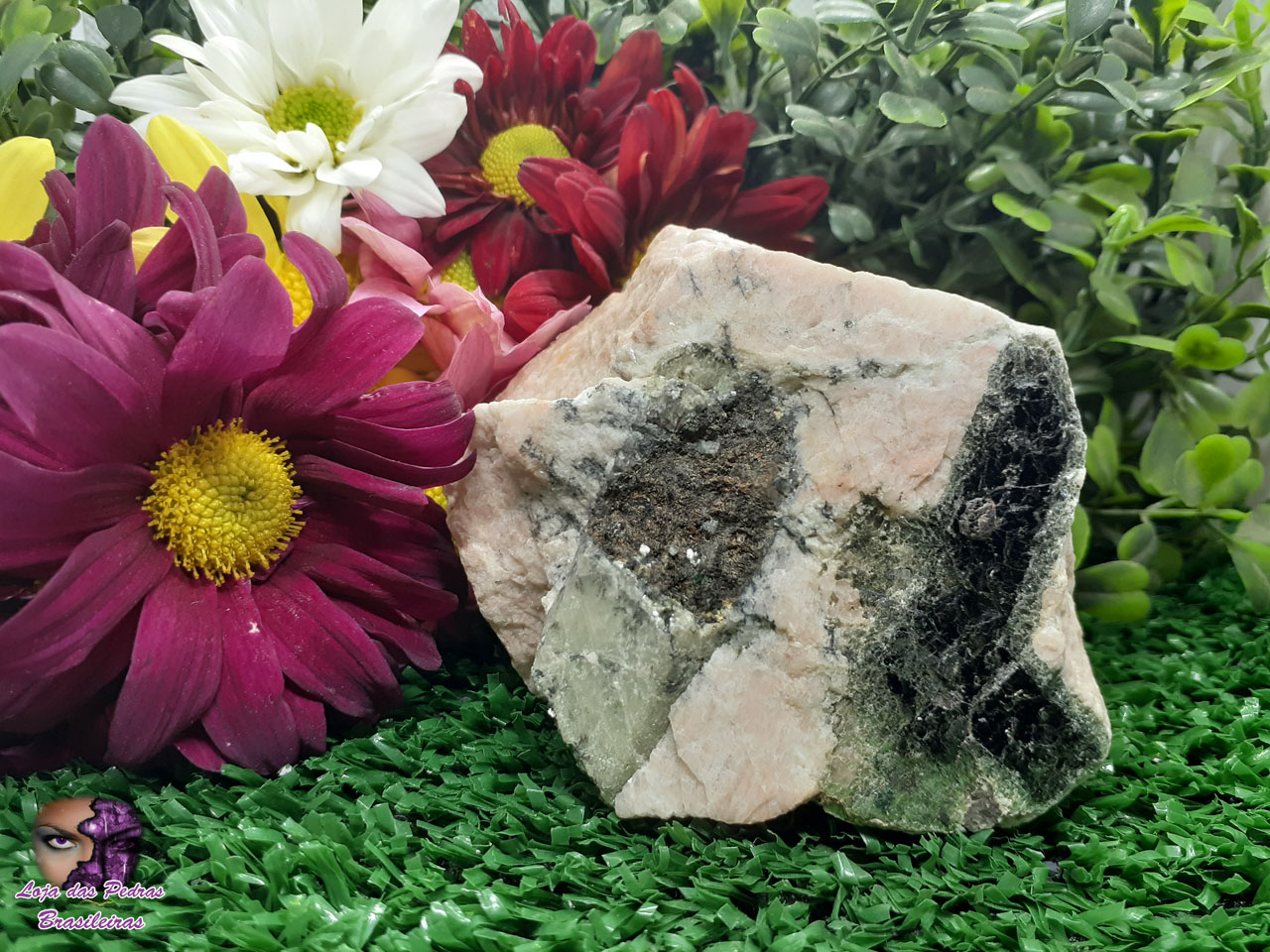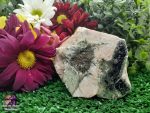Mica and its meanings and propertiesMica, from the Latin micare (brightness), is a generic term applied to the group of minerals consisting of hydrated silicates of aluminum, potassium, sodium, iron, magnesium and, sometimes, lithium, crystallized in the monoclinic system, with different chemical compositions and physical properties. Among others, the following can be mentioned: easy cleavage, which allows separation into very thin sheets flexibility low thermal and electrical conductivity resistance to abrupt temperature changes. Such characteristics give this mineral multiple industrial applications. The group of mica minerals includes several closely related minerals, from the phyllosilicate group, which have a highly perfect basal division. All are monoclinic crystals, with a tendency towards pseudohexagonal, and are similar in chemical composition. The highly perfect division, which is the most prominent feature of mica, is explained by the hexagonal arrangement of its atoms along successively parallel planes. The word “mica” is thought to be derived from the Latin micare, meaning luster, in reference to the appearance brightness of this mineral (especially when on small scales). In the classification of colors, it has an allochromatic color due to its variety of colors (white, black, brown, purple, green). Its hardness on the Mohs scale is 1.0. The mica group has more than 30 minerals classified as true micas, fragile micas and those with deficient interlayers. The best-known mica minerals are: muscovite, biotite, lepiodolite, glauconite, paragonite, phlogopite, among others. As can be seen, the mica group is made up of countless minerals, therefore, in this work, we propose to take an approach to muscovite, as it is the best-known mineral and has the greatest number of industrial uses. All micas are composed of sheets of tetrahedral silicates. Silicate sheets are composed of six interconnected rings that are responsible for a typical monoclinic or triclinic pseudo-hexagonal symmetric structure with a prominent cleavage plane parallel to the larger surfaces. These characteristics allow the defoliation of the mineral in sheets with thicknesses as thin as 1 µm, but those with commercial applications have thicker thicknesses, on the order of 15 µm. Ground mica dominates, in terms of volume, commercial applications, including in this category micronized mica (average particle size < 53 µm), dry milled (size between 1.2 mm and 150 µm) or wet (particle size between 45 and 90 µm) (Andry, 1992). The most significant commercialization of mica occurs in the well-known form, mica sheets, whose price depends on the dimensions of its sheets. Therefore, the purest and most flawless sheets, which do not affect their cutting and perforation, are those that have the best market offerings. However, there is a growing demand for fine-grained mica for noble purposes, such as pigments for the coloring, plastics and cosmetics industries. Mica has high dielectric strength and excellent chemical stability, making it the preferred material for making capacitors. , electronic circuit boards for computers (motherboard) and for radio frequency applications. It is also used as an insulator in high-voltage equipment. And it is a birefringent and is commonly used to make a 180 and 90 degree wave polarizer. Due to the heat resistance of mica it is used in place of glass in windows for stoves and kerosene heaters. It is also used to separate electrical conductors in cables that are designed to be fire resistant to ensure the integrity of the circuit. The idea is to prevent the metal conductors from melting, preventing short circuits, allowing the cables to remain operational in the presence of fire. This can be important in applications such as emergency lights. Lithotherapists associate Mica with learning. Simply hold a piece of mica in the moonlight, gently move it, and let its light flood your conscious mind. This will increase psychic awareness and the gift of prophecy. It is highly recommended for protection, as it is highly insulating. Furthermore, Mica helps to cure depression, stress, sleep disturbances and repels radiation. This crystal has very healing properties on the kidneys and liver. If placed under the bed, it absorbs water radiation and helps in cases of sleep disturbances and kidney stones. It also helps the pancreas and spleen. It helps in cases of kidney stones, digestion disorders and fat accumulation. Regarding the effects on the psyche, it especially improves manifestations of wear and tear, such as: the propensity for forgetfulness, senility and sclerosis. In meditation, this mineral produces heat through our heart chakra and causes our feelings and senses to be taken to a higher level of inspiration, so that we begin to know how to better coordinate our existence. MICADURITY TECHNICAL SHEET: 1 to 5 MohsChakra: HeartOrigin: Brazil, USA, South AfricaChemical composition: Potassium, aluminumEsoteric and psychic effects:ForgetfulnessSenilitySclerosisDepressionSleep disturbancesStressTherapeutic effects:StomachIntestineKidneysBack musclesHormone productionThyroidInsomniaSpleenPancreasDiabetes


